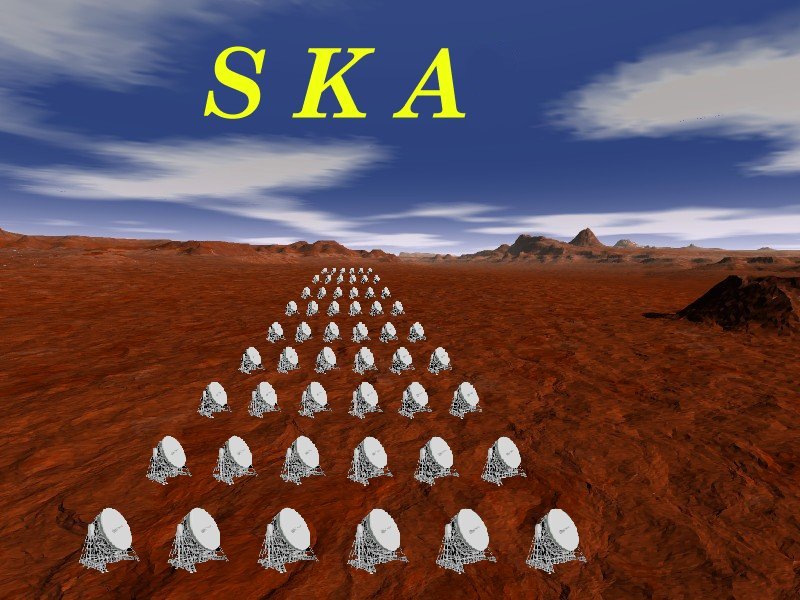
Don't worry we are not seriously suggesting that 220 copies of the Lovell Telescope be erected in some desert area, however this does give a feel for the orders of magnitude of the problem. Assuming that we could build a 76m telescope for say $50Million, then this solution would cost at least $11 billion!
SQUARE KILOMETER ARRAY(SKA)
Radio astronomers have systematically expanded the parameter space covered by their instruments. Hence almost all wavelengths ranging from metres to sub-mms are now available, and the time resolution available for observations is measured in micro-seconds. Radio Astronomers currently have the unique capability to produce images on scales ranging from degrees to micro-arcseconds.
However the one area of instrumental parameter space which remains to be exploited is sensitivity. Low Noise Amplifier (LNA) technology at radio wavelengths is now so advanced that radio observations are usually limited by the sky continuum background rather than reciever noise. Wider bandwidths can be used to increase the sensitivity of continuum observations, although clearly this method cannot be used to benefit spectral line observations without compromising velocity resolution etc.
The only real way forward for radio astronomy is to increase the collecting area available. This was initially driven by the requirement to observe neutral hydrogen with arcsecond resolution. Currently a combination of the Rayleigh-Jeans law and the relatively low spin temperature of neutral hydrogen results in angular resolution of around 5 arcsec with the VLA before brightness temperature sensitivity limit prevents higher resolution without prohibitive integration times .
However the case for higher sensitivity is not confined to neutral hydrogen work and a Broad Science Case for a high sensitivity instrument was prepared by participants at the 1998 Calgary meeting